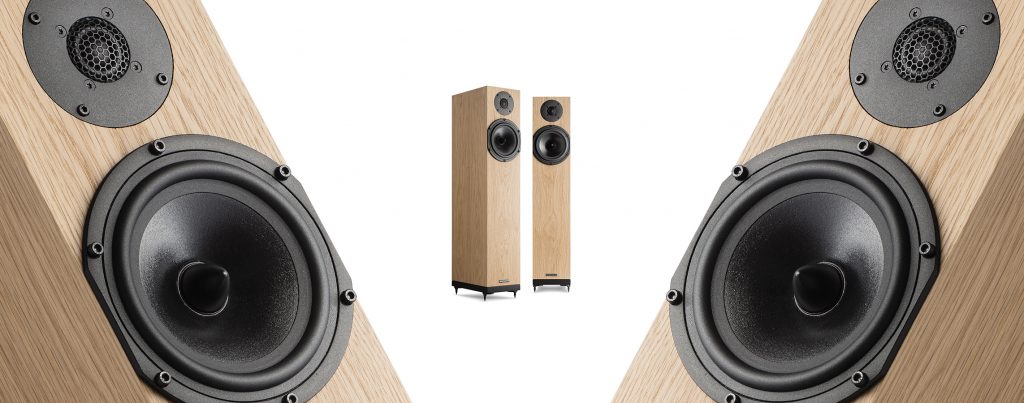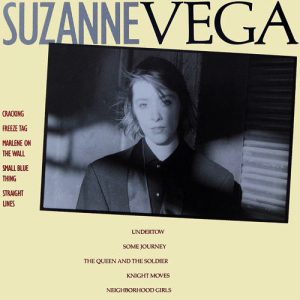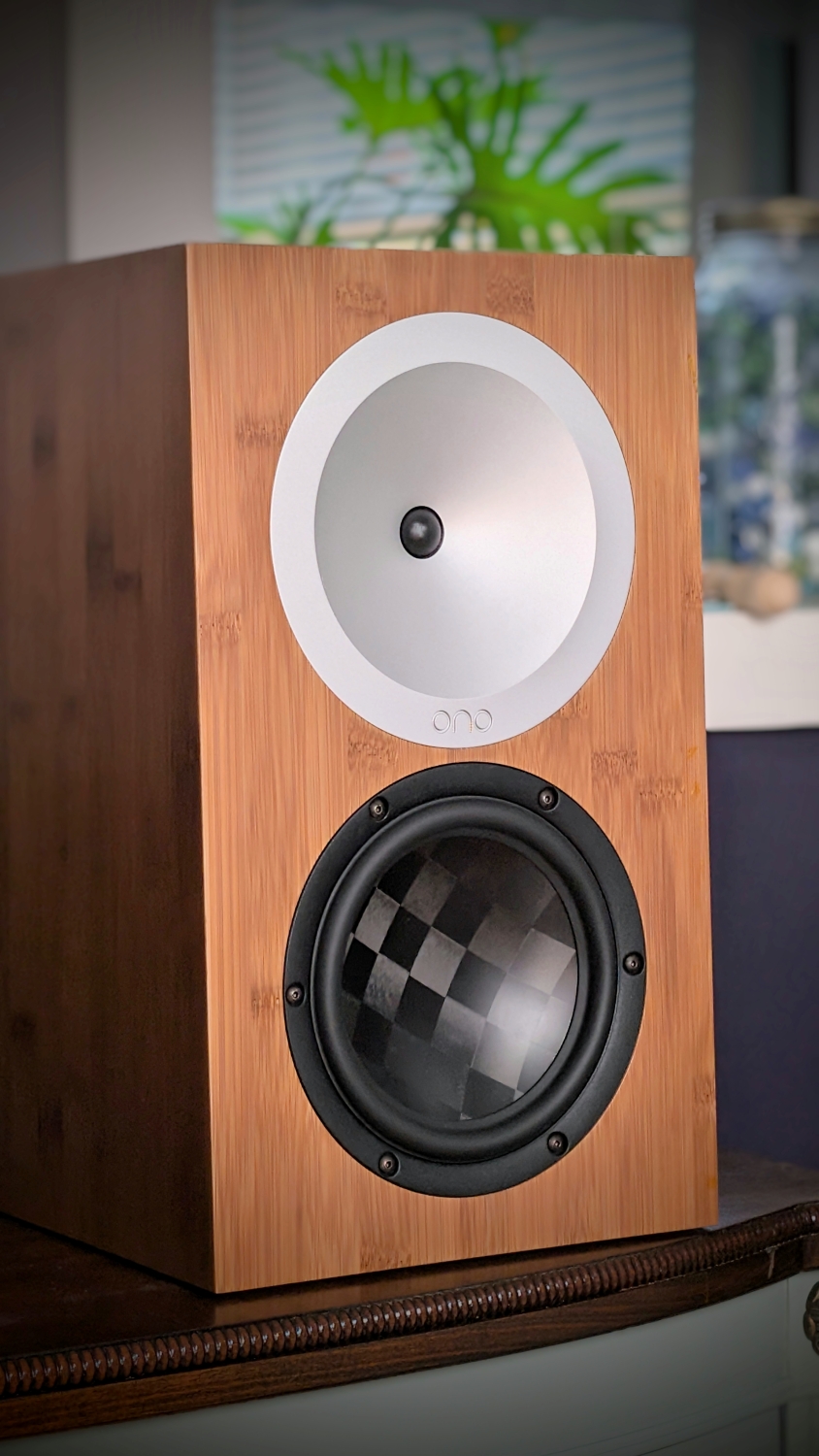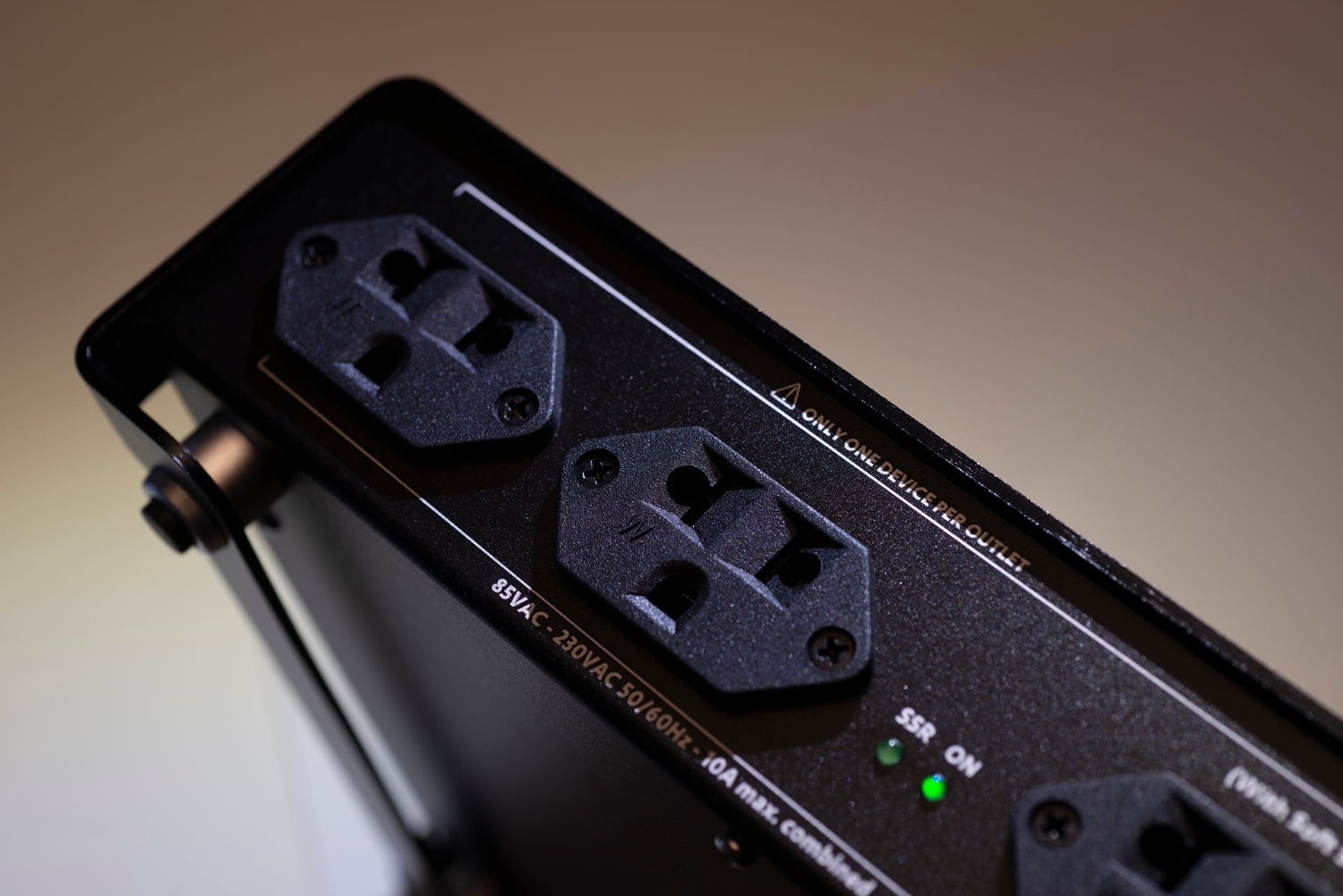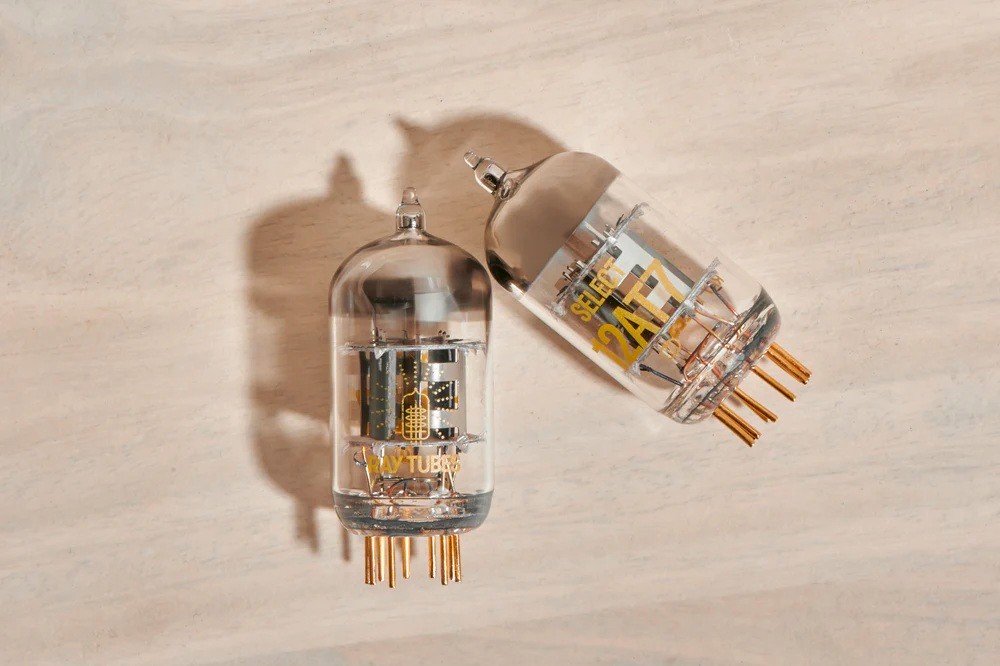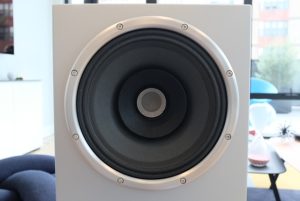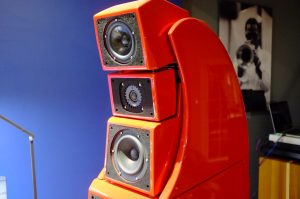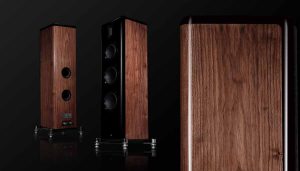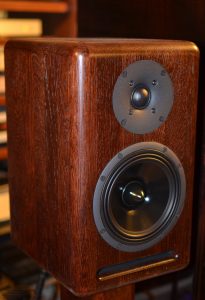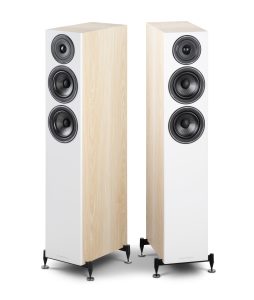At the last Rocky Mountain Audio Fest, a conversation took place between Chris Morris of Bluebird Music (Spendor's North American distributor, based in Canada) and PF's Dave Clark regarding Spendor's newest and most affordable line of loudspeakers. The A2 and A4 Models, priced at $2395 and $3195 USD, would offer Spendor's renowned sound at a much more affordable entry price point, and perhaps a review might be possible on PF. I ended up fielding the review opportunity, and a series of emails resulted over a period of several weeks between me and various parties at Bluebird. I basically described my system and setup for Chris—who was my initial contact—in an attempt to determine which of the two models offered would be the better fit for me. I made it pretty clear that I'd just dialed in my new listening room, which was significantly larger than my previous one, so perhaps the larger A4 would be the better choice. Even then, Chris assured me that he felt the A2s were very special.
Jay Rein (also of Bluebird Music) suddenly became my primary contact person, and he raved about how enamored he was with the A2. I agreed with his enthusiasm, so send the A2! A week or so passed with no confirmation from Bluebird; and another confusing trail of emails and missed phone calls ensued, involving both Chris and Jay. I eventually sent both parties another email, declaring that I was pretty certain that if they had, in fact, not shipped the speakers yet, that perhaps the A4 was the better choice for me. An email finally arrived from FedEx confirming that I'd be receiving a shipment from Bluebird; when the loudspeakers actually showed up, I really couldn't say with certainty which of the two models would be arriving! My wife Beth called to let me know that a couple of really big boxes had shown up; she basically had to bribe the FedEx guy to bring them inside the front door for her.
Even though I'd seen the specs on the A2s, it didn't really register with me how truly diminutive they actually are. Judging by the size of the boxes—which didn't look significantly smaller than my Zu Omens—maybe they sent the A4 after all? I hauled the boxes down to the listening room and started unpacking them; to my great surprise, they were, in fact, the A2s—and they were not only tiny but also very heavy for such small-format speakers. They were just packed really well in much larger boxes than one would rightly expect. I called for Beth to come have a look; her immediate exclamation was "That's them? I looove them! They're so small! Maybe we could put them in the living room!" Although the Spendor A2s share the same dimensional proportions as their larger and more expensive siblings, they measure a surprisingly compact 29.7 inches tall x 6 inches wide x 10 inches deep. That's correct; this is a floor-stander that barely measures two-and-a-half-feet tall! Needless to say, visually the A2s are off-the-charts good!
The Spendors are fully designed and manufactured in the UK, at Spendor's factory in the south of England. And although I've always fancied myself as a British-monitor kind of person, and feeling very keenly towards the whole "smallish, well-crafted, speakers-on-stands" kind of sensibility, I've never actually owned a pair. I've always had an awareness of Spendor loudspeakers; very classic British designs that originated in the sixties. I'd guess that their somewhat highish entry price point served as a reasonable barrier for not having seen them in homes or shops around town here in Atlanta. Even in what seems like another lifetime ago, when there was still quite the plethora of boutique audio shops to explore in the seventies and eighties in the ATL—no Spendors. At least, not that I was ever aware of.
Even though Jay Rein had told me that he'd been playing the A2s for about a week, the pair that arrived appeared to me, from their very precise packing, to be essentially unused. So I proceeded with my normal process of putting on some jazz (Monk's classic Straight, No Chaser) with good bass content, setting it to repeat, and letting it play for a couple of days to gently break the new speakers in. But right out of the gate, I noticed that the Spendor A2s had what I considered a very warm and inviting sound, which was not really what I was expecting; I really thought they'd be more on the analytical side. And the soundstage was also surprisingly large and well-projected for such a smallish-form floorstander. My initial impressions with regard to construction and materials was that the A2s were absolutely top-shelf in every respect of cabinet appearance, driver complement, and fit and finish. While I'd still personally bristle slightly at the $2395 price point, I could easily see that the Spendors were very likely the most well-made loudspeakers to ever grace my listening room. The A2s simply exuded quality; everything about them hearkens back to an era when this level of fit, finish, and detail in a loudspeaker was the expected norm. And that made the rather highish price seem like much less a concern; it put things more into a proper perspective.
In appearance, the A2s are not unlike so many loudspeakers that seem to be appearing on the market these days. Cabinet finishes are available in three real wood veneers, with choices of black ash, dark walnut, and natural oak. My review sample arrived in the natural oak finish, and it was indeed very handsome; in a world where so much of what we see is covered in vinyl, it's a real pleasure to behold woodworking of the highest quality. The cabinets are heavily braced, also with polymer damping used throughout the interior, so resonances are not a problem. All components of the A2s, from cabinets to drivers, are designed and built by Spendor in their own factory; even the crossover coils are wound onsite. There are no grill covers for the two drivers, which includes a complement of a slightly less-than-one-inch soft dome polyamide tweeter, along with a six-inch polymer woofer. The soft dome tweeter is slightly inset in the cabinet face, and is protected by a perforated metal plate, and the woofer is surface-mounted on the face of the enclosure. With the supplied spikes attached, the speaker seems very rigidly in place and unlikely to topple for any reason. I'd give very little concern to any mishaps that might arise, though due to their smallish stature, I might keep an eye on small, prying fingers or pets that might be attracted to them.
To give some context to my experience with the A2s, the following equipment was employed in the review system: the amplifiers are Emotiva XPA-1L Class A monoblocks, powered at 35 wpc. While biased to produce 35 watts of pure Class A sound, they're also switch selectable to 250 watts of Class AB, if needed. In almost five years with them as my cost-conscious system reference, I've never felt the need while listening to move the switch to Class AB. Except for extended periods when they're not being used daily, and then only to reduce the bias level during idle times and keep my power bill from spiking excessively! A lot of audiophiles pooh-pooh Emotiva products; in my experience these Chinese-made amps give much, much more than a taste of the high-end on a near-beer budget, and I bought them during an Emotiva sell-off for less than half-price. With the Spendors, they proved a match made in heaven.
My preamp is the new PS Audio Gain Cell DAC (reviewed HERE), which combines a truly superb balanced, analog preamp with an ambitiously good and tailorable DAC; it also offers every digital input imaginable, and is remarkably transparent for an under $2K combo unit. For digital sources, I have an Oppo disc-spinner that I use as a CD transport and for SACDs; I also employ a custom-built Acer laptop with a complement of multiple Solid State Drives as my music server. It's connected to the Sonore UltraRendu (reviewed HERE) for streaming digital files to the PS Audio DAC; in between is a JCAT USB Isolator for galvanic noise suppression. Analog sources include a new Project The Classic SB turntable (reviewed HERE); it's fitted with a magnificent Hana EL moving coil cartridge that's connected to the also superb Sutherland KC Vibe Phono Preamp; reviews of the two latter items are forthcoming shortly. Cables are all by MG Audio (loudspeaker connections), AudioQuest and Project (single-ended analog interconnects), Pangea (silver USB and coax digital interconnects), and Blue Jeans Cables (balanced analog interconnects and system network cables).
For comparison purposes, I employed my usual system loudspeakers, which include the Zu Audio Omens; my pair is the "Dirty Weekend" variety, and includes drivers that were previously used in Zu's higher-end offerings and traded in by customers for upgrade purposes. The ten-inch drivers in my pair were sourced from Zu's flagship (at the time) Druids; it's truly shocking what $1,000 USD will get you from Zu Audio in terms of classically engineered, highly efficient (92dB/watt), and musically satisfying sound. Topping the Omens are a pair of Heil AMT supertweeters that I custom-built a few years ago to add a touch of sweetness and sparkle to the upper registers of the Zus. I also flip/flop between the Omens in my system with a twenty-year-old pair of rebuilt and highly-modified Magneplanar MMGs. I rewired and reconstructed the damaged panels, then built custom stands which improve their imaging and dispersion significantly. I also ripped out the stock crossover and built new, outboard crossovers from famed Magneplanar rebuilder Peter Gunn's original crossover design—the crossovers cost more than the speakers did fifteen years ago! The reborn MMGs, in my book, will compete evenly with loudspeakers costing many multiples of their $1K overall rebuild cost. All in all, it would be very interesting to see how the diminutive Spendors compared with my two budget references (both with very divergent acoustical approaches!).
The A2s come equipped with very nice floor spikes that can be fitted, if so desired, and I also imagine that they might benefit from placement on relatively lowish stands. While I did employ the spikes; I never felt the need to raise them at any point during the review period. In fact, the A2s projected a soundstage that had a width and image height that totally seemed out-of-place for such small cabinets; they actually offered a very similar listening experience to that of the Zus, especially in terms of image specificity. And the Spendors didn't seem to be exceptionally particular in terms of room placement; I'm currently using a Dynaudio-developed model for speaker placement, which puts the loudspeakers about one-fifth of the distance into the room from the front wall, and also one-fifth of the distance into the room from the side walls. The listening position is also one-fifth of the distance from the rear wall, and the A2s just really sang using this setup. I eventually ended up moving the listening position a little more forward and moving them a bit further away from the side walls, and while this was quite different, it really made very little difference in the overall presentation. The imaging was always magnificent!
The A2s just flat-out rocked with anything I played through them—and I listened to a broad variety of musical genres for this review. With more acoustically-based jazz, they produced a surprising amount of bass, even in a largish room with about 3500 cubic feet of space. The crossover point of 4.2kHz means that the woofer actually acts as more of a "mid-woofer," but the A2s are rated to run from 36Hz to 25kHz. I don't have the capability to make meaningful measurements of frequency response, but my ears tell me that the rated bass downpoint is perhaps a little bit optimistic. I employ a pair of subwoofers in my system, a Definitive Technology unit and REL, and with those those inserted into the system, of course, there was significantly more heft in the bass output. But the A2s didn't seem at all lacking for satisfying levels of bass in what I consider a very decently-proportioned room and with music played at realistic, but reasonable output levels. The A2 is a ported design, and the rear port helps to improve the bass extension somewhat beyond what a sealed box would probably offer; that said, I never noticed any "chuffing" or any other noise in relation to the port—the overall bass performance was seamlessly rendered. The bass output of the A2s struck me as being very similar to the Magneplanar MMGs in the same room; great with many types of music, but they'll never crank out massive levels of bass at high SPLs. Nevertheless, with most jazz, rock, classical, and vocals they played the music with plenty of authority and never showed any signs of strain.
The Spendor A2s are rated at 85dB/watt, which I consider to be reasonably efficient; by comparison, my Zu Omens have an efficiency rating of 93dB/watt, and are very efficient. My old Maggies, in contrast, are only rated at about 80dB/watt, and are notoriously inefficient—they generally beg for a big amp. The A2's are comfortable with amps rated from 25 watts to 125 watts, which makes them very easy to drive and unfussy towards amplifier selection. They mated perfectly with the Emovitas, either with the available 35 watts of Class A, or with the switch reset to AB for 250 watts. I never had an issue with the 35 watt setting, and did all listening tests with that combination. While I do prefer to listen to music at what I consider reference levels (translation: loudly), I generally listen to a lot of acoustically-based music such as jazz, folk, and classical. And with the exception of the occasional forte passage (Solti's Die Walkure, for example), I found the musical presentation of the A2s very enjoyable. In fact, my acid test for full-blown dynamic range handling involves the group of tracks that surround the Act 3 "Ride of the Valkyries" from the aforementioned Die Walkure. In order for a loudspeaker to pass my test of what I consider "totally musically satisfying", it must deliver this passage without strain at reference levels; in Solti's 1965 recording, the conflagration of massed strings, brass, and timpani build into an orchestral crescendo that (in my book) is unmatched in recorded sound. The A2s gave you a lot of the essence of this classic recording; and while I didn't want to try and push the smallish speakers too hard, I was impressed that they gave the music as much oomph as they did.
While I use a lot of jazz and classical to establish basic boundaries with new loudspeakers, I'm also quite enamored with the human voice, and I listen to a lot of vocal and choral music as well. A loudspeaker, for me, has to offer a really liquid and compellingly realistic vocal presentation; the A2 is no slouch in this important test. An album that I use frequently for speaker evaluation is Suzanne Vega's eponymous debut album, which has a number of cuts that essentially employ her voice accompanied by acoustic guitar and bass. This record is a surprisingly good-sounding offering from the early eighties, and the A2 offers a strikingly good capture of the recorded acoustic, with Suzanne and her guitar placed perfectly in the soundfield. I used this evaluation in two ways; as a rip of the remarkably good A&M Red Book CD streamed to the PS Audio Gain Cell DAC from the Sonore UltraRendu, and also from the equally good LP original. While I find the LP to be the ultimate in terms of sound quality, the digital rip is also superb; either way, through the A2s the sound was rendered with realism and perfection. The A2s have a sense of timing and pace such that for me, almost anything I chose to play through them was rendered with stunning accuracy and musicality. And probably the A2s greatest strength is its remarkably good midrange presentation, which was clearly evident with every musical selection.
And even though I tend to gravitate towards acoustic sources for much of my musical endeavors, I'm a child of the seventies, and still love a lot of classic rock (Sabbath, Zeppelin), prog rock (Yes, King Crimson), and a whole lot of eighties rock. Most rock music conveys for me an almost religious experience, often akin to listening to full-blown orchestral music—and simply must be played loudly. While I played these speakers at levels that I'd consider reference or near-reference with most listening material, I have to admit that I didn't push them to the kind of extremes that I might send my own equipment to. In other words, don't buy these speakers if being able to play Crimson's Thrak with unrestricted range is one of your priorities. You'll definitely need to invest in a subwoofer.
At the time of the review period, I also happened to have on hand the Luminous Audio Axiom Walker Mod Passive Preamp (you can read the review HERE). Even though it was built by Tim Stinson of Luminous with a capacitance match for the impedance of the Zu Audio Omens in mind, I thought using it might be instructive on how the A2s handled being driven by the Axiom, which—quite frankly—is a wildly transparent preamp. The results were strikingly good—especially with analog LPs as the source—the music took on an extra measure of clarity and effortlessness that I wouldn't have dreamed possible coming from such a small form factor loudspeaker.
I find the Spendor A2s very appealing on many levels. While my wife and I have just downsized to a much smaller home, I still have a fairly large listening room. But if my circumstances were such that it dictated a much smaller speaker for use in a less roomy situation, the A2s would fit the bill perfectly. My wife loved their fluid sound, and especially loved their near-invisibility. And even though my entire life I've tended to be attracted to loudspeakers that were very fussy in terms of amplification or placement, it's a true delight to listen to a speaker like the A2 that delivers that trademark British sound with little concern for either conundrum. I do feel that the price is a bit on the high side, but when you consider what you get in terms of quality of construction, appearance, unfussy equipment partnering, and—most importantly, sound quality—makes the decision of where to spend the money ultimately a much easier one. Highly recommended!
A2 Loudspeakers
Retail: $2395 (USD)
US Distributor
Bluebird Music
Spendor Audio Systems Ltd.
All images courtesy of Spendor Audio and Tom Gibbs




